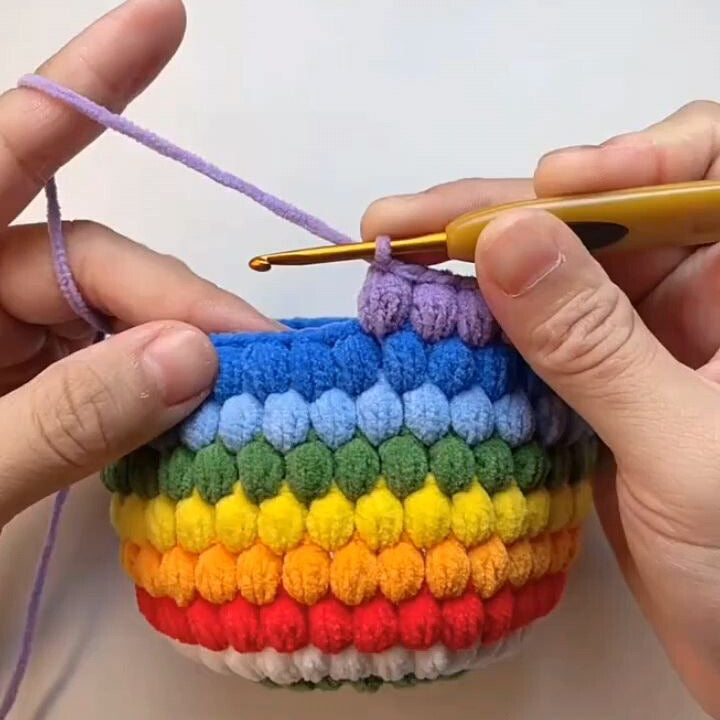
Beginner’s Guide to Basic Crochet Stitches
Welcome to our Beginner’s Guide to Basic Crochet Stitches! Whether you want to create a stunning blanket or cute little toys, learning the basic stitches is an essential first step. In this article, we’ll introduce you to some fundamental crochet stitches and provide instructional videos to help you master these techniques faster.
Essential Crochet Tools
Before we dive into the stitches, let’s take a look at the basic tools you’ll need:
· Crochet Hooks: Available in various sizes and materials, including metal, plastic, and wood. Choose one that suits your project’s requirements.
· Yarn: Medium-weight yarn such as cotton or acrylic is usually suitable for beginners.
· Scissors: For cutting yarn.
· Tapestry Needle: Used for finishing or joining different crochet sections.
Introduction to Basic Stitches
1. Chain Stitch (ch)
The chain stitch is the foundation of most crochet projects. It is very simple and involves learning how to make a slip knot and pull the yarn through with the crochet hook.
Watch the video below to learn how to make chain stitches:
How to hold your crochet hook and start your first chain stitch
2. Single Crochet (sc)
The single crochet stitch is tight and sturdy, making it perfect for crafting solid, windproof fabric. It’s commonly used for projects like wallets or decorative items.
3. Half Double Crochet (hdc)
The half double crochet stitch falls between single and double crochet in terms of height and looseness. It’s ideal for projects such as scarves or sweaters.
Click below to learn the half double crochet stitch:
Half Double Crochet Tutorial Video
4. Double Crochet (dc)
Double crochet is one of the most common stitches in crocheting. It quickly builds up the length of the fabric and can be used to easily create flowing scarves or lightweight blankets.
Learn how to crochet the double crochet stitch
5. Treble Crochet (tr)
The treble crochet, or triple crochet, creates a longer, looser stitch perfect for adding texture and airy patterns to your projects.
Watch this video to learn the treble crochet stitch:
Treble Crochet Tutorial Video
6. Double Treble Crochet (dtr)
The double treble crochet is even longer than the treble crochet, allowing for the creation of tall, open patterns that add a dramatic flair to your work.
Here’s a video on how to crochet the double treble stitch:
Double Treble Crochet Tutorial Video
7. Slip Stitch (sl st)
The slip stitch is used for finishing or connecting two crochet pieces. Although simple, it is crucial for joining or ending a row.
Watch the instructional slip stitch video:
Slip Stitch Tutorial Video
Basic Techniques
Round Start/ Magic Ring
Starting a project in the round is essential for creating circles or motifs. The magic ring technique allows for a tight, adjustable starting point.
Learn how to begin your round projects here:
Magic Ring Tutorial Video
Increasing Stitches & Decreasing Stitches
Increasing stitches adds width or length to your crochet project by adding more stitches in a row or round. This is key for shaping items like hats or amigurumi.
Decreasing stitches reduces the number of stitches in a row or round, crucial for shaping and tailoring your projects to fit specific dimensions.
Watch this video on how to increase stitches and decrease stitches
Tutorial Video
Working in Front Loop Only (FLO) and Back Loop Only (BLO)
Crocheting in the front loop only creates a distinct ridge in your fabric, giving your project a textured look. This technique can add detail to accessories or home decor.
Crocheting in the back loop only also creates a unique texture and is often used for elastic effects in ribbing and other structured designs.
Discover how to crochet in here:
Back Loop Only and Front Loop Only Tutorial Video
2-Chain Picot Stitch (Dog Tooth)
The 2-chain picot, known as the dog tooth stitch, is a decorative technique that adds small, pointed edges to your crochet work, ideal for embellishing borders or adding visual interest.
Learn how to create the 2-chain picot stitch:
2-Chain Picot Stitch Tutorial Video
Handy Tips
· Beginners should consider using thicker yarn and hooks, such as 4-ply or 5-ply milk cotton, to easily see and handle stitches. These types of yarn offer great value for money and are ideal for beginners.
· Stay relaxed and avoid tension to allow smooth movement of the hook through stitches.
· Practice multiple times until you feel comfortable with the stitches and hand feel.
Conclusion
Crochet is not just a skill, but a way to express creativity. Through these basic stitches and instructional videos, we hope you feel empowered to start your crochet journey. If you try out any projects, feel free to share your creations and experiences in the comments!
Thank you for reading our blog, and stay tuned for more crochet tips and inspiration in upcoming posts!
